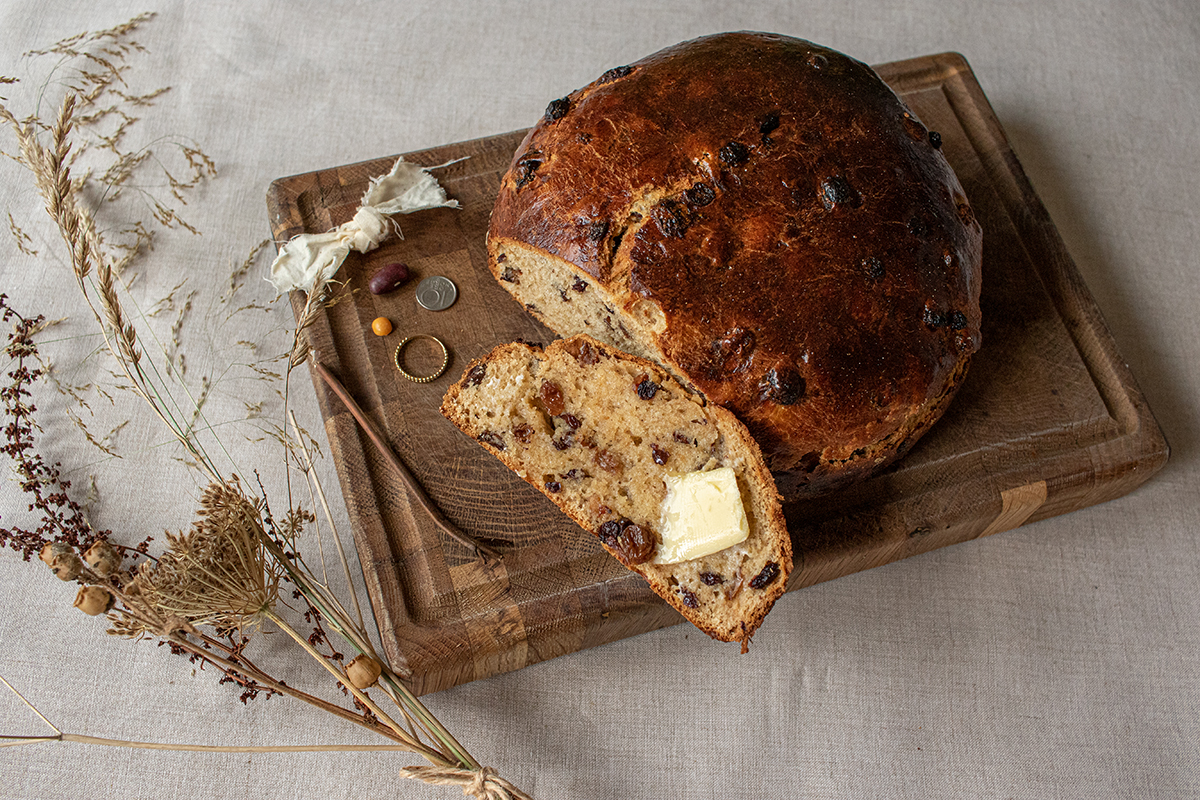
Before there was Halloween (or All Hallows’ Eve), there was Samhain: a Celtic pagan festival that marks the end of summer and the culmination of the season for harvesting crops. In the folktale titled Tochmarc Emire, in which the famed and notorious Gaelic demigod Cú Chulainn begins his training under the warrior-woman Scáthach, Samhain is mentioned as the first of four quarter days (which fall between an equinox and solstice) – and as such, the festival was observed to welcome the new year. Time was measured differently in Gaelic Ireland: the day began and ended at sunset, and as the crops withered and died, the ‘darker half ’ of the seasons represented a new cycle.
Samhain, and its association with death and renewal, was a time of year that Celts believed opened a doorway into the spirit world, allowing the souls of ancestors and the aos sí (fairies and elves of the Tuatha Dé Danann – the deities of pre-Christian Gaelic Ireland) to slip across the threshold. Some made benign visits, while others were thought to harbour mischievous or malicious intent. To placate the spirits and the supernatural, families would leave offerings of food and drink outside their homes, with the hope that the aos sí would allow them and their crops to survive winter. Those observing Samhain would also disguise themselves as the aos sí and spirits after dark in order to protect themselves from supernatural attack.

As well as feasting, drinking over bonfires, and carving jack-o’-lanterns out of turnips to ward off evil sprites, Samhain was celebrated with divination rituals and games. Apples, symbolic of fruitfulness, represented immortality, and hazelnuts were thought to contain wisdom; so it followed that games, including the peeling of apples to find the first letter of a future lover’s name and roasting a pair of hazelnuts, one named for the roaster and the other the roaster’s beloved, to see whether they would make a good match, were popular activities during the celebrations.

The bairín breac (or barmbrack) is a fruited loaf into which six items were normally baked, and which were believed to foretell the future of whoever received a piece containing one of them: a pea (they would remain without a partner); a ring (they would marry within the year); a stick (for an unhappy marriage); a piece of cloth (for bad luck); a coin (for good fortune or wealth); and a bean (for a future with no money). The items are no longer included in barmbracks, as they pose a health hazard, but the bread has, throughout the centuries, remained a much-loved food, appearing in popular literature including James Joyce’s short story ‘Clay’ in Dubliners (1914), which tells of a middle-aged woman who, upon playing a divination game, is confronted by the revelation that she will never find love and must instead join a convent.
Speaking of which: the Christianisation of Ireland in the fifth century came with the difficulty of getting Gaelic tribes to convert, and so to enact a soft colonisation of pagan customs, the new religion absorbed elements of the old, demonising pre-Christian deities and replacing them with saints and martyrs, and eventually naming it All Hallows’ Day. And while Halloween is now a largely secular holiday, pagan festivities and customs remain the preferred form of celebration. The nights are drawing in. Best get your turnips out.
From the October 2021 issue of ArtReview